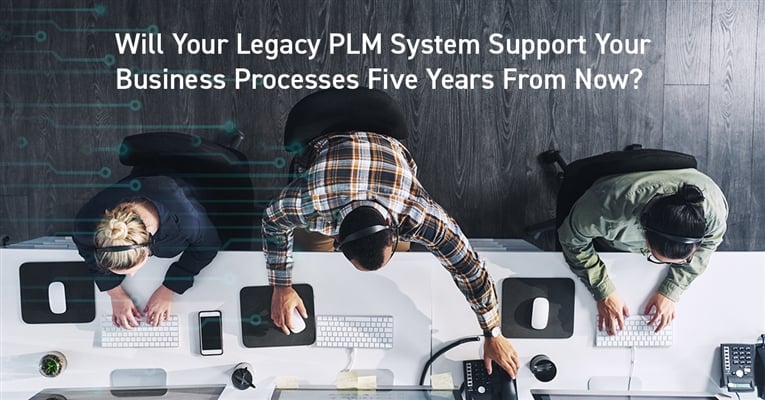Every business leader is acutely aware of the increasing pace of today’s business environment. The increased demand for shorter time-to-market for new products has made product turnover much faster today than it was five years ago. In addition, product complexity has also increased. Hence, the need for better data connectivity and traceability is more important today than ever before.
Manufacturers, independent of industries, want to make sure that their technology investments, such as PLM, PDM, CAD integrations, and so on, are able to meet the business requirements now and well into the future via continuous and cost-effective improvements rather than a series of discontinuous, high-intensity, and costly upgrades or enhancements.
Now, it is not realistic to keep all solutions within an enterprise application landscape on the very latest release; however, staying current is always advisable as it reduces risk of both catastrophic failure and incremental degradation.
I often identify solutions that are not currently supported in use for mission critical functions when I am onsite at industrial manufacturers.
Not only does that practice add considerable risk to business operations. It also makes it harder for the company to achieve the goal of transforming analogue processes into digital workflows. If existing platforms are hindering digital transformation because they are not updated to the current version, you run the risk of setting back your business by several years.
Remember, if your business-critical platforms are several years old, it will likely take equally as many years to get back on track.
So, if your platforms are five years old, you have lost five years of new updates and functionality that could have been a great benefit to your company. And it will take you an additional five years before your existing platform is current with other platform offerings on the market.
Technology evolution is a main driver of software obsolescence. There are many negative impacts caused by older and unsupported software solutions, such as lack of new features and the inability to enable an end-to-end digital thread are arguably the most critical.
The question you need to reflect on is, can you afford being 5 years behind the competition?
So, does the cloud solve this issue?
Many companies are turning to the cloud to address their issues. Unfortunately, the cloud doesn’t solve all the upgrade issues, but it does solve some very important ones. Most new software companies are adopting a cloud-native business model. Cloud upgrades often happen every few weeks ensuring application freshness, but there is a downside.
Not all cloud solutions are built in a manner that allows them to be configured to specific needs or upgraded regularly, ensuring that the latest capabilities are available.
Moving software to a cloud solution that does not support configuration or upgrades is like choosing a car based on the type of tires it has.
A cloud solution should meet all your business requirements appropriately and support evolving requirements moving forward. So far, most multi-tenant PLM solutions on the cloud are focused on specific industries and use cases. They are not as flexible as many of the mature on-premises-based solutions have proven to be.
Fortunately, this is starting to change, as the native cloud solutions grow their depth and breadth, and many of today’s PLM mindshare leaders, as defined by CIMdata, are transforming their solutions to leverage cloud platform capabilities, and moving to a business model that supports cloud PLM offerings.
What can we learn from this?
PLM solutions are a complex landscape of business processes, software systems, integrations, and supporting hardware in most companies. The various technologies have lifecycles and need regular upgrades and occasional replacements. Postponing upgrades is done for both good and bad reasons, and it can be risky to be an early adopter as bugs and other issues can be disruptive.
But, on the other hand, missing out on performance updates or useful capabilities can inhibit progress and drag profitability lower.
In addition, missing security updates puts data, intellectual property, and businesses at risk of theft. Digital transformation is a major industrial trend that old and obsolete software cannot often support. Companies must be able to stay current to have access to the features and security they need to grow their businesses successfully.
A recent CIMdata research project found that Aras customers have upgraded more recently than customers of other mindshare leaders’ solutions. Companies looking for a PLM solution that can be easily kept up to date should check out Aras Innovator. Aras’ technology and business approach help customers configure a solution to their needs and keep it current.
Learn more about how Aras can help you modernize your PLM and avoid PLM Legacy Syndrome.

